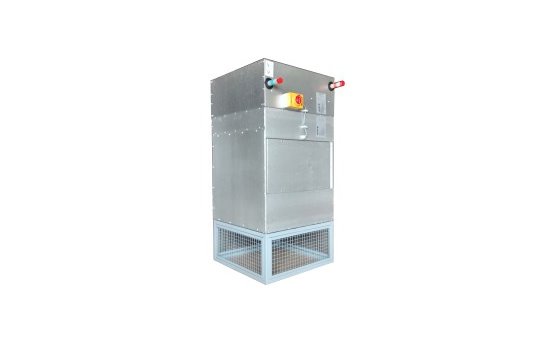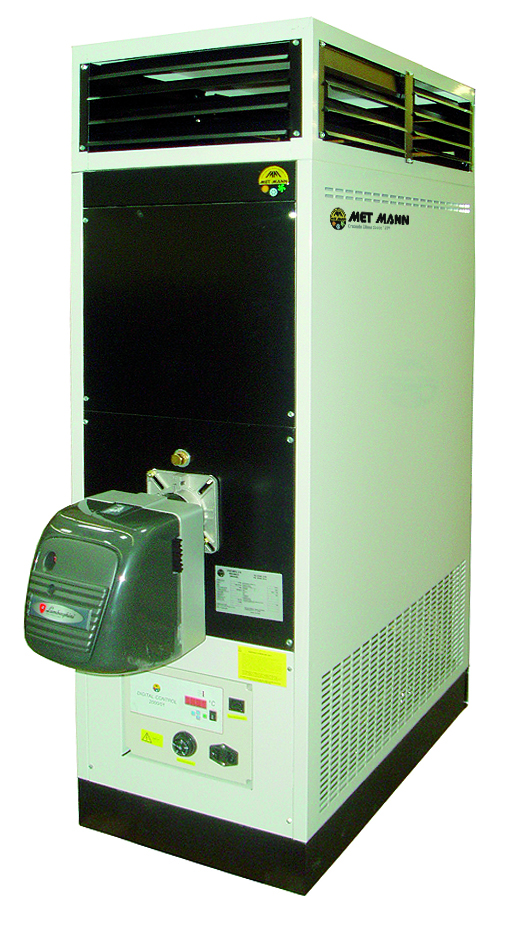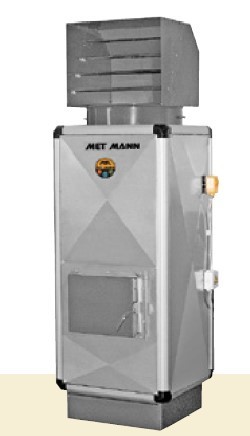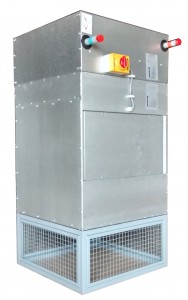LPHW Cabinet Heater

LPHW Cabinet Heater and Application
LPHW cabinet heaters find an application in replacing old cabinet heaters fired with oil or gas.
 MM-070 oil fired cabinet heater
MM-070 oil fired cabinet heaterCabinet heaters, so long the bench mark of industrial oil and gas-fired heating are becoming more expensive to operate. Like other gas and oil-fired heating they are under operating cost pressure from new green technologies with new eco entrants into the fuel market and increasing supply pressure and taxation forcing fossil fuel pricing on a long-term upwards trend. The trouble is that if you are in the situation of replacing a fossil fueled cabinet heater with a green alternative the options are limited. There are however options worth considering.
 Biomass fired cabinet heater
Biomass fired cabinet heaterOne is a biomass fueled space heater. There are models that burn pellets or granular biomass or there are other heaters that burn logs or lumber off cuts. The trouble with these machines in today's market place is that although they are excellent heaters in their own, right, producing lots of warm air, they have no financial incentive bar the cost of the fuel, because the incentive schemes are targeted at 'boilers' rather than air heaters.
So this steers the end users choice towards a biomass boiler complete with a suitable thermal store and a number of LPHW fan heaters. For many applications this is a very cost-effective solution, as water fed fan heaters are a reasonably cost-effective way of converting hot water into warm air. These LPHW units are simply a casing holding a coil and an axial fan, which when connected a thermostat, valves and/ fan speed controller, provides the warm air when needed. The limitation of these LPHW fan heaters is that they are designed to operate in free air and do not have sufficient pressure capability in the axial fans to connect to ducting systems.
Oil or gas-fired cabinet heaters tend to be fitted with centrifugal fans which makes them versatile enough to blow in to free air or via some discharger louvers, or into a ducting system so that the air can be distributed to exactly where needed in the building. If the ducting is already in place then when replacing the heater is would make sense to retain the ducting for connection to the new heater.
 LPHW cabinet heater
LPHW cabinet heaterEnter the LPHW cabinet heater. In the same format as a conventional cabinet heater the LPHW fan heater comprises of a cabinet containing a centrifugal fan and a heat exchanger. Air is drawn through the mesh faced base section, up through the fan, through the LPHW coil and outward vertically.
Puravent offer LPHW cabinet heaters in 4 different physical sizes, 12 coil options and 7 fan options. As with other types of LPHW heater control of the system can be added by way of ancillary valves, thermostats and fan speed controllers.
The LPHW cabinet heaters from Puravent are available either as a short version, where side panels on the fan section are replaced by mesh or with a robust mesh base section. Where the system is being used as a replacement for an existing cabinet and will be floor fixed, we generally recommend using the base section which has more robust anchor plates and because the extra height gets it closer to the level of any pre-existing ducting that needs to be connected to. Once the heater is specified the next stage is to fabricate an outlet plenum for the top of the heater which will enable it to be connected to the ducting.
Where required Puravent can supply the whole package including fan section, coil section, base, outlet plenum and controls valve gear. Ask us for help and details.

